Ground Control II: Operation Exodus
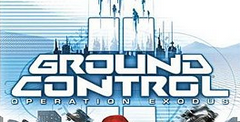
| a game by | Massive Entertainment |
| Platform: | PC (2004) |
| User Rating: | 7.5/10 - 4 votes |
| Rate this game: | |
| See also: | Best RTS Games |
Sweden has been responsible for some pretty important popular culture over the years - ABBA. Bjorn Borg. Volvo and eye-watering hardcore pornography. However, our Scandinavian chums have also spawned one of the best real-time strategy games ever in Ground Control. Released in late 2000, Massive Entertainment's title shifted the focus away from unit creation and resource management to the actual battles, creating a hugely entertaining action-packed game that received 87 per cent. Now the team is back with a beautifullooking sequel - Ground Control 2: Operation Exodus - and we spoke exclusively to Massive Entertainment's lead game designer. Henrik Sebring, to get all the juicy details.
"One of our biggest goals with GC2 is to put the fun back into combat." says Sebring. "If the player has massed a huge tank supported infantry force, we want it to be fun to actually use, instead of just sending it off to kill the enemy base." Ground Control 2 takes place 300 years after the original game, a period where the powerful corporations that previously dominated space have been superseded by two factions - the democratic Northern Star Alliance (goodies) and the fasdstic, Roman-inspired Terran Empire (baddies). You play as Captain Jacob Angeius. an officer in the NSA, and begin your struggle against the Terrans on the Earth-like planet of Morningstar Prime.
Death From The Skies
"We've got a completely new set of units in GC2, with a nice spread of infantry, tanks and air units. In addition to combat units, the player will also have a full compliment of support vehicles to wage war with, and some of these will certainly have never been seen in a RTS game before," says Sebring. Although the emphasis of the game is on the battles, there'll be a light aspect of resource management, with acquisition points available to use for battlefield scans, for example, or reinforcing your army. "However, there will be no peons, slaves or harvesters in GC2 - everything is geared towards combat," he adds. One of the biggest additions to the GC universe will be the new orbital support weapons. "These include everything from vision-blocking smokescreens, tactical nukes, EMP blasts and radar scans," continues Sebring. "They really add a new dimension to the gameplay and open up a whole new chapter of tactical options." This will be especially true for the online multiplayer mode, which will also have an expanded "drop-in" element to allow players to join in an ongoing GC2 game.
Massive Entertainment has developed a completely new 3D engine fa GC2 that utilises the latest generation of cards. According to Gebring, this will generate visuals that will "blow the player's mind out", with gageous water effects, detailed landscapes and a huge draw distance. In addition, the engine will be fully scalable, so gamers with less-powerful PCs can still sign up to the Northern Star Alliance. Judging by these sizzling screenshots, Operation Exodus is going to be mightily impressive by the time it has launched later this year - stay tuned fa a hands-on preview in the coming months.
Download Ground Control II: Operation Exodus

System requirements:
- PC compatible
- Operating systems: Windows 10/Windows 8/Windows 7/2000/Vista/WinXP
Game Reviews
After last month's extensive preview, you might think you know all there is to know about Ground Control II. But think again... We've just played an almost-complete build of the game and found a few surprises lurking in the terrain. Massive Entertainment's CEO Martin Malfisz was there to talk us through the most exciting sci-fi 3D RTS this side of StarCraft 2.
Having recently revealed GCII's third race, a nomadic bunch of neckless aliens called the Virons, we asked the sensibly named Martin to tell us a bit more about them. The Virons are the second playable race and live in clan ships as they no longer have a home planet.
Massive's CEO was reluctant to tell us exactly what part these gnarly-skinned warriors would play in the war between the game's two warring human factions (the evil NSA and the Terran Empire), but we'd wager they've got intentions on your home planet, Morningstar Prime. Martin demonstrated how these creatures meld different troop types to create more powerful soldiers. During this symbiosis, the units become encased in a massive green egg, and a new warrior hatches out after half a minute. Huge emphasis is also being placed on plot and character development. You follow the story through the eyes of captain Jacob Angelus. It'll be a hero's journey, says Martin. We believe this will make for a better storyline and allow you to become attached to him. You'll see him grow both in terms of personality and in his relationships with other characters. Occasionally, you'll get to use him as a unit on the battlefield, but mostly he'll act as a commander.
Action Stations
Having sufficiently grilled Martin, we turned our attentions to the action on-screen. Our mission - to capture an enemy stronghold. Starting off on a breathtaking canyon ridge, we called down a dropship full of tanks, foot soldiers and mortars (unlike in the original, you can now command these soldiers individually rather than just in groups). We then pounded the enemy from afar while the tanks rolled slowly in.
As with every unit type, tanks come replete with a unique secondary function -extending armoured shields to allow ground troops to approach the enemy in safety. Deploying these enabled us to gather our troops en masse just outside the NSA's base, while mortar fire suppressed their forces. Then, while we called in another dropship of backup units, the foot soldiers broke cover to infiltrate the base, while our tanks pounded it from outside.
Zooming into the action revealed a titanic struggle, the battle seesawing back and forth as heavy armour was sent skywards by violent explosions and broken bodies littered the floor.
With three months left to tighten the screws on gameplay, Ground Control II is already looking like a masterful RTS, with more good ideas than a dozen of its peers. Barring total calamity, the earth will move this June.
Real-time strategy games may be a hoot to play, but they're usually about as realistic in their depiction of war as Tetris is of masonry. If such games were ever intended to duplicate state-sanctioned butchery, half the civilian population of the United States would be out chopping wood, breaking rocks and picking berries in order to supply their huge military machine. You can almost imagine George Bush Jr sitting behind his desk in the Oval Office, motioning one of his lackeys over to enquire about tank production, only to be told: "We're short about 30 loaves of bread Mister President, but as soon as the granary is built we should be OK to take out Eye-ran."
Anyway, the point is that when it comes to mass conflict of a heavily armed nature, field commanders shouldn't have to worry about harvesting ore or researching various technologies in order to feed their war machine, as the only resource that needs managing are the men and machines employed to kill the enemy. Such is the gorgeously simple premise adopted by the original Ground Control, and we can't tell you how happy we are that the sequel shares the same agenda.
Cities In Dust
Set more than 300 years after the planet-wide war of the original, Ground Control 2: Operation Exodus focuses its attentions on the planet of Morningstar Prime, the last free world of the Northern Star Alliance and a prime target for forceful reintegration into the Terran Empire. From orbit the draconian Terrans have mercilessly bombarded hundreds of cities, and as the game begins their troopships have started their descent to take out the few cities left standing. Your job as the military leader of the NSA is to halt their advance, or at least delay it until a lasting sanctuary or some technological mirac be procured.
We've been playing around with some pre-Alpha code recently, and we have to say it's all looking rather impressive. The mission structure is entirely linear, but developer Massive Entertainment is hoping that the strength of its story and characters will more than make up for the lack of freeform grand strategy. Instead, the scope for open-ended gameplay will assert itself in the missions themselves, of which there are A 30 all told.
Lie In Wait
The original game was characterised by rather featureless terrain. This time, as well as the undulating and varied landscapes, GC2's maps are littered with imposing landmarks. You've got elaborate military bases that can only be overrun by co-ordinated attacks, dense forests capable of hiding dozens of shock troops, and vast ruined cities where soldiers can not only enter the crumbling piles of stone and metal, but take positions on various levels with firing positions set to ambush in specific directions.
This new feature is ably demonstrated in the opening mission, where a small team of NSA troops is sent in to retrieve an unidentified object from behind enemy lines. Posted into various buildings flanking a once glorious town square, the troops lie in wait to ambush a patrol, all guns trained inwards to create a merciless crossfire that will leave few Imperial soldiers standing. Without full use of cover and surprise tactics the mission would be impossible. Like its predecessor, there's no troop creation in Ground Control 2. You don't have an endless stream of instantly-trained soldiers to draw on, and it's for exactly this reason that GC2 is such a tactically astute game, one that's arguably far closer in scope and scale to the likes of X-Com than Command & Conquer, despite its frantic real-time demands.
Drop Zone
Further enhancements have been made to other parts of the game. For example, rather than expecting pre-assigned squads of reinforcements to arrive at preordained intervals, GC2 introduces a system whereby your success on the battlefield will allow you to call on more and better reinforcements at virtually any time in the mission. The quicker you overrun the enemy and the more casualties you inflict upon them, the more Acquisition Points you rack up and so the more troops, tanks and close air support units you can draw from. Reinforcements must however be brought in at designated landing zones, which more than likely will be in the control of the enemy. Hold the LZ for long enough and success is assured.
This makes the dropship something of a pivotal unit in the game, yet it isn't just an elaborate way of getting new units on to the field of play. Instead of filling it with troops and tanks, you can load it with missiles and bombs and have it patrol the battlefield. Or you could fill it up with sensor equipment and scout out the map. The more fuel you load, the longer it will stay aloft to pinpoint the enemy units. Of course, if your dropship is taken out you can forget getting any reinforcements for the rest of the level.
Alien Resurrection
As well as the liberal freedom-loving forces of the NSA and their brutal Imperial aggressors, Ground Control 2 introduces a new playable race going by the name of the Virons (no relation to the Vogons, more's the pity). Pug-ugly, big and brutish, it would appear these nomadic invaders are there simply to fight over the scraps and add their peculiar brand of organic weapons and machinery to the mix. However, the appearance of the Virons is central to the story, as they are keen to exact revenge for some past transgression.
Rather than having to rely on off-field support, the Virons are able to adapt from their stock of four basic units by melding units together on the battlefield. An engineer and a tank will produce a repair vehicle, whilst a stock grunt mated with an alien hover unit (they're still arguing over what to call these things) will produce a kind of sniping hovercraft thing that fires gas bombs, the lethal clouds of which will drift across the battlefield with the wind. It looks more impressive than it sounds and some of the visual effects that complement the alien weapons are cool as hell. One artillery unit sends out a kind of tectonic shockwave that ripples along the ground, flooring infantry and rattling vehicles beyond repair.
Flames Of Freedom
Of course, the aliens aren't the only ones able to field interesting machines, and while the NSA favours traditional projectile weapons and tracked vehicles and the Empire enjoys lasers and antigrav hoverdynes, there are a number of unique and interesting units to look forward to. Not least of these is the otherwise innocuous-looking minesweeper, a vehicle that flails the ground, churning up clods of earth as it ceaselessly searches for hidden mines, while at the rear it lays explosive traps for enemy infantry. Because of their lumbering speed, an alternative function is to extend protective wings that shield infantry advancing from behind. It isn't just the units themselves that we're looking forward to though -it's the added functionality of these units as well. Snipers, for instance, can be posted secretly on high ground to act as spotters for distant artillery guns, while the engineer can not only mend damaged vehicles and buildings, but erect small fortifications and static gun turrets to aid in a hasty defence. Tanks, when asked to retreat, will do so in reverse, making sure their strongest side is always facing the enemy. It's simple yet obvious features like this that make GC2 such a constant joy.
If It Ain't Broke
One aspect that hasn't changed is the attention to detail in the graphics and the simplicity of the user interface. The developers are once again making use of a free-floating camera that will allow for an almost unlimited scope to view the battlefield. You can zoom in close enough to each soldier to make out nasal hairs, or pull back to view entire battalions going hammer and tongs from above. Similarly, units will gain experience points as they progress, which will not only make them better fighters, but more specialised depending on their combat familiarity. Line of sight and elevation will be central to success, although it won't be enough to be within a certain radius of the enemy to unveil them - your leading unit must be able to actually see them before they're revealed.
Admittedly, aside from the visual makeover, new vehicles and added functionality, there isn't much that's fundamentally new in GC2. However, as was the case with Homeworld 2, the countless subtle differences look set to make a huge impact on the way the game plays. Those who know the original and believe they can imagine what the sequel is going to be like may be in for quite a shock, as for pure tactical sophistication Ground Control 2 may well end up being the strategy game of the year.
Weather Reporting For Duty
Rain, Shine, Sleet Or Snow, The Outlook Is Good Whatever The Weather
Absent completely from the original game, the element of weather will now play a crucial role in how you plan and co-ordinate your attacks. A heavy downpour will slow down your entire army, especially vehicles, while various types of stormy conditions may short out electronic systems, reduce visibility or even damage certain units. Snow, while a bugger for your tanks and troop carriers, will actually speed up your ground troops, while high winds will affect the movement of the game's hover vehicles. Weather patterns can also change in seconds, not from tropical sun to arctic blizzards perhaps, but the changes will be random - meaning commanders need to be prepared to change strategy if the skies darken.
This should be . the ultimate online RTS with its frenetic gameplay, lack of resource management and instant access to an entire tech tree. Yet somehow Ground Control II has managed to fall well short of expectations due to the fact that there only seem to be two outcomes to any battle. The first outcome is prevalent when you first dip a tentative green-skinned toe into the piranha-filled cauldron that houses the Ground Control II community - also known as Massgate, developer Massive Entertainment's very own hosting server.
In these situations, more experienced opponents generally tend to rush all of the map's Landing Zones (LZs) and Victory Locations (VLs) within the first two minutes of a game. By minute three it's all over and you find yourself back at the menu screen wondering what happened. Even semiexperienced players can overrun a map in less than five minutes by calling down scores of fast units to the battlefield and sending them to every corner of the map, leaving newcomers surrounded, defeated, and ultimately disillusioned.
The Stalemate
Scenario two is actually great fun for the first 30 minutes, as you charge around the map, fortify your strongholds and engage the enemy in tense, pyrotechnic-packed encounters where superior tactics really do count.
Then, with each side having secured half of the map, you build up an assault force and charge the enemy, confident your massed ranks can puncture a hole in their defences. Problem is, you usually make no impact whatsoever, because like you, the enemy has packed its strategic locations with every type of unit. What this means is no matter what you throw at them, they've always got the advantage, especially if they've worked out the importance of using each vehicle's secondary function which generally furbishes units with massive defence bonuses. And so, hour after tedious hour, you and the enemy launch daring yet futile attacks on each other, until someone gets bored and quits.
Big Mac And Fries
Finding available servers isn't the easiest thing to do either, as most players tend to loiter around Massgate's menu screen like pus-faced teenagers outside McDonald's on a Friday night, full of pubescent bluster, but utterly incapable of organising a game. What's more, there's no option to play as the Imperial Empire, meaning you only have two sides to choose from, NSA or Viron.
It's such a shame, as multiplayer GCII should have been so much better. Sadly though, it all becomes too predictable too soon, and it's rare (but not impossible) to find an exciting skirmish. The potential for greatness is clearly there, but until Massive rethinks GCII's multiplayer options, it'll remain little more than an occasionally entertaining, but often frustrating pastime.
Three years ago, the RTS was beached on the sandbanks of its own success, a once-proud beast fading away after a golden era of prosperity. Blighted by a dearth of originality and an abundance of sub-standard isometric Command & Conquer clones, the genre was in chaos, constantly spewing out the same ideas until they were more regurgitated than a bulimic's dinner.
But then something changed. In the space of four revolutionary months, the world of RTS gaming was given a new infusion of life, morphing almost beyond recognition. After a tentative start, the 3D RTS finally raised its head and began its journey to prominence with three titanic titles appearing in as many months: Shogun: Total War, Earth 2150 and the sensational futuristic war-sim Ground Control. But while the first two of these 3D behemoths have received makeovers in the forms of sequels and stand-alone expansion packs, the second instalment of Ground Control has been conspicuous by its absence. Until now.
Swedish Beauties
On a not-so-sunny day in Sweden, I visited developers Massive Entertainment, the collective brain behind the multi-award winning first game. Clearly, they're quite chuffed with what they've managed to achieve with their new project, and it's not hard to see why. The game is powered by a sublime new engine, capable of rendering visuals detailed enough to grace an FPS, and it's being pushed right to its limits in Ground Control 2.
Set 200 years after the cessation of the hostilities of the first game, Ground Control 2 is set to offer even larger and more diverse missions than its predecessor, without losing the sense of immediacy that furnished GC with such a unique character. "We want the player to feel as though they're really on the battlefield," explained Henrik Sebring, the game's design director, as he panned around a spectacular battle with the free-roaming camera. He was commanding a crescent of tanks, brimming with infantry units as they advanced on an enemy Ion cannon. They were meeting stiff resistance from a squad of enemy foot soldiers, who were utilising their elevated vantage point to great effect. "Just like Ground Control, the terrain will all be tactical," beamed Henrik, as he used some dense foliage to conceal a flanking party he'd sent out to surpnse the enemy. Clearly, he'd played this one before.
Dropping Off
CEO and founder of the company Martin Walfisz, keen to point out some of the game's new features, saw his chance as Henrik lost himself in the game. While he was finding his way back, Martin proceeded to talk us through some of GC2's nuances.
First off, resource management. Once again there isn't any, with the emphasis purely on the action, strategy and conquest. However, whereas you had to make do with the units you began each mission with in Ground Control, Operation Exodus boasts a rather different approach when it comes to unit selection. "There are tactical locations on the map. When you capture these you acquire more Acquisition Points. These APs are used to call down more troops," explained Martin. Showing us how this works, he stormed a hill, capturing it with ease with some highly effective pincer tactics. The APs started wracking up. "When you have enough APs, you can call down a dropship carrying your choice of reinforcements. The dropships are like a player's base. You can configure your dropship to be a monster support weapon, or maybe a stealth ship too."
But what about the Al? "We want the Al to surprise you. It concentrates on using the battlefield to its advantage and setting up ambushes," beamed Martin. Fair enough, but in order for an RTS to recreate the visceral feel of a real battlefield, the Al also needs to react realistically to your attacks. Martin feels confident Massive has that cracked too. "The more firepower you put on a unit, the more they become suppressed. They will have to hunch down, so they can't return fire so easily."
After the presentation we were ushered into a room to have a go ourselves, while the whole development team gathered round to watch. Despite the similarities, GC2 feels very different from the original, with sprawling maps giving rise to isolated battles all around the level rather than in just one place. There are many more vehicles this time around too, with an array of buggies, APCs, tanks, helicopter and futuristic giant robots all at your disposal.
Soldier, Soldier
In fact, it's all looking very impressive, and the only major concerns at this stage are a clumsy camera control interface and a preoccupation by some of your soldiers to get lost behind trees, making them hard to see or command in the heat of a firefight. Fear not though, as Massive still has plenty of development time in hand.
So, should you be getting excited then? A quick squint at the sci-fi 3D RTS horizon shows little else (apart from Homeworid 2) to get the heart-rate going, proving just how far ahead of the field Massive Entertainment is with Operation Exodus. And having done the RTS genre such a favour a few years back, and by building on rather than replicating its winning formula, it deserves to have another hit game. And from the looks of things, Ground Control 2 could well be it.
If you're a strategy game fan, then surely you've felt it by now. That niggling itch in the back of your brain telling you that something's fundamentally lacking from many of the RTS games you play. Just something small, mind you. Damn, now if only I could think what it was. Just give me a minute here... Graphics? Yes, that's it: it's definitely graphics. No. wait, there they are. Silly Martin. Just look at them, all pretty and 3Dish, bump-mapped, mip-mapped, zip-zapped, tri-textural super-google shaded with a cherry on top. They've certainly come far of late, haven't they?
So what is it then? Ah, I've got it. Actually, now that I think of it I can hardly believe I brought it up. Strategy. Yes. Realistic. Lifelike. Strategy. I know - it's hardly as though it's in the title of the genre or anything. R (real). T (time), S... Oh, hold on a second.
But there are. of course, always exceptions, and Ground Control II is one of them, a sequel to one of the most satisfyingly strategic PC games ever made. It's a 3D RTS that's bereft of resource management and all about battlefield tactics. It's about outwitting your enemy through intelligent strategic decisions, not mining ore and massing troops for one flash offensive. So. fancy checking it? Of course you do.
Check It
Now, if you haven't played the first game, don't panic. Breathe in, breathe out, aaaaand relax. There, all better now. Y'see Ground Control II is set so long after the first game that the only background you really need is this: your planet. Morningstar Prime, is the setting for the Northern Star Alliance's last stand against the evil Imperial Empire, led by tight-arsed former dominatrix Imperator Vlaana (just check out if you don't believe me). Ha-ha. made you look...
Things are looking pretty bleak for the NSA. Outnumbered, outgunned and with Rich Tea supplies running low, it's only a matter of time till they wilt under the onslaught of the Terran Empire - or Imps as they're jovially referred to by everyone in the game. Enter you - captain Jacob Angelus (who looks uncannily like Massive's CEO Martin Malfisz), a square-jawed beret-wearing hero who sports the worst cockney accent this side of a Mary Poppins movie. You simply can't take the man seriously. He's all like: "Awwight generawl, nar problem at orl me ol matey skip piana tuning fella me lad, da ya want may ta clean yer chimmerney while oym ere?" Still, that's your alter ego and you're stuck with him from beginning to end, as the entire plot - which we'll come to later - is seen through his eyes. Or should that be 'oys'?
Two For The Price Of One
There are two campaigns for you to play through, the first of which sees you controlling NSA forces. Things start sedately enough, with an excellent tutorial taking you through the basics. Massive has thankfully managed to avoid producing the type of life-sapping tutorial that's responsible for more suicides than glue.
Through it, you learn the essentials of the game, namely how to use your Dropship to call reinforcements to the battlefield, and how to utilise the fully tactical terrain to your advantage. With resource management unceremoniously dumped like a boring partner who could lose an entire meal between their front teeth, your main goal in GC2 is to capture ' strategic areas called Victory Locations and Landing Zones . (LZs), then hold them in - order to gain Acquisition Points (APs). These can then be spent on an array of reinforcements. The more Victory Locations and LZs you capture and hold, the more APs you clock up. Clear? Good, let's move on then.
Dropping Your Load
One of the game's best features is the Dropship, which delivers your troops to an LZ while laying down suppressing fire to ward off any marauding nearby enemies as your new recruits disembark. Upgradeable in a variety of ways (firepower, armour, cargo etc), these hulking machines are your most important unit, and can even turn the tide of battle in your favour when things start to look hairy.
Battlefield tactics are also essential if you're to stand any chance of succeeding, as Ground Control II is tougher than old meat that's been deep-fried in concrete. Well, it is on the harder levels, anyway. Seizing the high ground not only allows your troops to see further, but lavishes them with a huge attack and defence bonus, as does ensconcing them in buildings.
This latter feature is particularly handy when infantry come up against heavy armour, and if you stumble across any enemies holed up in buildings, you can even order your men to charge in and engage them indoors. With the free and versatile camera, it's a real joy to zoom into a tower block and watch as your troops slug it out at close quarters with the enemy, although it would've been nice had they been able to fight hand-to-hand. Still, you can't have everything I suppose.
But wait, there's still more to learn. Armoured vehicles tend to be weak at the rear, so flanking is an essential skill to master. Forests provide cover for infantry and make them hard to detect, bad weather reduces visibility and realistic line of sight means you can only attack an enemy that your men can actually see.
I'm The Party Pooper
Right, all sounding pretty good so far isn't it? But let's not be too hasty though eh, because GC2 has one huge problem when it comes to its line of sight system. Or maybe it's the Al. Or maybe it's both. Either way, it's a huge problem. Picture this. You've just sent your men up a hill. They arrive at the top panting and sweating like beasts to see a group of enemy units below. Now they're gonna get it.
Using these boys as spotters, you roll out the artillery that's been sitting dormant back at your base, select their secondary function - rapid and multiple shell firing (for more on this sort of thing, see 'Anyone For Seconds?', above) - and begin your attack.
Shells arc majestically through the sky and come crashing down on the enemy. The impact twists your gut into intestinal fusilli. Men cry in pain as shrapnel severs their limbs. A passing kebab van stops by to replenish its stocks and reheat some six-month-old Alsatian meat on burning soldiers. Vehicles crumble into dust. And do any of these poor saps think to move away from your relentless shellfire? Do they hell. They can't see you, so they assume you're not there, and simply carry on dying. This doesn't happen too often, admittedly, but it does occur regularly enough to sully the game's otherwise excellent tactical subtleties.
It's Not Easy Being Green
Once you've completed the NSA campaign, danced around the room like a gibbon and dislocated both your arms in order to smugly pat yourself on the back, you suddenly realise you're only halfway there. Picking up the story seamlessly is campaign number two (which is considerably harder than the NSA one), which sees you taking control of a bunch of lizard-like green-skinned aliens called the Virons, or 'Vyyrorrrns' as the stereotypical cigarchomping, tough-talking, scarfaced general who dishes out your orders calls them.
A nomadic race, the Virons live on colony ships, abide by a strict code of honour and, just like any self-respecting alien race, speak in idiotic sentence structures with accents that fall somewhere between Russian, Scottish and Indian. "Welcome you we do Angelus captain. Honour you we do Angelus captain." Bless.
In terms of plot, things are pretty solid, if a little predictable at times, with plenty of twists and character development keeping you hooked from beginning to end. The story centres on the NSA's hunt for an ancient artefact, which proves to be their last and only hope for survival, while the Virons... Well, you'll just have to find out for yourself, as telling you any more would only give the game away. And I'd hate to do that. What I will tell you though is that things are left wide open for a sequel or expansion pack.
Playing as the Virons isn't too dissimilar to playing as the NSA, as each side has virtually the same set of units, only the Viron's firepower looks all gunky and organic, like giant beetles with laser beams attached. However, there is one, very significant difference between them: melding, a process that enables any two Viron units of the same type to merge together on the battlefield to create a Super Unit. However, these never seem to be quite as powerful and satisfying as you might hope, and while the process does have its advantages - different weapons and abilities as well as smaller but tougher groups of troops to manage - you can't help but think it's more of a gimmick than an essential tactical tool.
Freedom Funnel
So, now we've established the basics, let's move on to the meat. Ground Control Il's missions can be separated into two very distinct categories: freeform and objective-driven. The first of these is where the game's true brilliance lies, and where the lack of resource management can be felt most poignantly - as well as working the best.
As early as the second level, expectations rise to virginitylosing proportions as you and a squad of men - backed up by two Al generals with their own set of troops - race across the sea to storm an Imp-held beach. Set to a perfectly judged heavy-rock score which gets the pulse a-racing, you and your men charge the enemy lines in a desperate attempt to gain a foothold on the map and win your side's first Landing Zone, as mortars and laser fire cut into your modest ranks with merciless ferocity. After some bloody fighting, you finally capture your first Victory Location, and that's when the fun really begins.
Scattered across the map are countless more of these enemy-held Victory Locations and LZs, and together with your two Al-controlled allies - who work autonomously, yet always feel as though they're working with you - your sole goal is to capture and hold all the strategic points on the map. Easier said than done of course, as the enemy launch counter offensives to recapture their lost territory, creating a seesaw effect as the battle swings back and forth.
Good, Bad And Ugly
It's missions like this that prove to be among the most intense ever to grace an RTS - shots of pure mayhem spewing out cerebral conundrums by the second; unceasing barrages of action that require lightning-fast decisions and a keen knowledge of tactics and troops. Dropships wail over the battlefield delivering reinforcements, blinding explosions light up the alien sky, while desperate pleas for backup from overrun LZs and Victory Locations assault your ears. This is where Ground Control II excels, with levels so action-packed they literally sweat intensity. And yet, despite their thrills and heart-palpitating mayhem, they also always require you to think strategically about your every move.
It's tragic then that some fingernail-tearingly fiddly unit selection and occasionally abysmal path-finding blight these otherwise brilliant levels. It's enough to send you into a keyboard-massacring fury as your men are cut down through no fault of your own, as you futilely attempt to select them, or find that half of them have been left behind in a nearby field and are idly admiring the dandelions instead of killing things.
Being Objective
So what about the objective-driven missions? Predictable in nature, these charge you with capturing one pre-set LZ and Victory Location after another, funnelling you down set routes in order to adhere to the slowly unfolding storyline. Don't get me wrong, these maps can be fairly entertaining in their own right, but they never come close to the dizzying heights or guttural thrills of the more freeform maps.
Stealth missions have also been thrown in, slowing down the action and making you approach each level far more cautiously. The only caveat is they reek of being tacked-on, and soon have you wrinkling your nose in dissatisfaction.
However, despite its irks and shortcomings, Ground Control II is still a thrilling and beautiful RTS that sucks you into its world of war and carnage, shakes you up with its intensity, plot-twists and booming aural assaults, then spits you back out into reality as the end credits roll. It's by no means a masterpiece, but it is one of the most tactical, rewarding and entertaining RTS games money can currently buy. If you want real strategy, then you want a copy of Ground Control II. It's as simple as that.
Have you got what it takes to be a battlefield commander when the bullets start flying and explosions ring out all around you? Well, with this exclusive demo you can find out, as the action in 3D RTS Ground Control II is as unrelenting and explosive as it comes.
The demo begins with two NSA (Northern Star Alliance) tutorial missions that acquaint you with the game's strategic intricacies and gameplay mechanics. You're taught everything you need to know here, from battlefield tactics to how to call in reinforcements.
Once you've mastered the controls, you can pit your wits against the Al in a full level from the game that sees you mounting a daring raid on one of the stranded and unsuspecting leaders of the Terran control. The basics of Ground Control II centre on capturing Victory Locations and Landing Zones (LZs) on each map in order to accumulate Acquisition Points.
You can then spend these on calling down reinforcements to help bolster your forces, which are delivered to an LZ of your choice by Dropship. But be careful, as the enemy is keen to win jMK these key strategic locations back, so make sure you keep them well defended.
The Dropship is your most important unit, so make sure that you clear the area of any pesky enemy SAMs before Z' Wg calling it down, or you'll be left stranded and unable to call in backup. Dropships also lay down W covering fire as they deploy their load, and can be upgraded in a variety of ways, including better firepower, armour and a larger cargo hold.
Reinforcements can be picked from human soldiers of different disciplines or vehicles, which include hi-speed rocket launcher buggies, APCs and combat engineers - the healers of your outfit.
Every single unit comes with a secondary function that makes this already highly tactical game even more engrossing. These vary from additional armour to attack bonuses, and the way in which you use these can often be the key to winning or losing a battle.
This should be . the ultimate online RTS with its frenetic gameplay, lack of resource management and instant access to an entire tech tree. Yet somehow Ground Control II has managed to fall well short of expectations due to the fact that there only seem to be two outcomes to any battle. The first outcome is prevalent when you first dip a tentative green-skinned toe into the piranha-filled cauldron that houses the Ground Control II community - also known as Massgate, developer Massive Entertainment's very own hosting server.
In these situations, more experienced opponents generally tend to rush all of the map's Landing Zones (LZs) and Victory Locations (VLs) within the first two minutes of a game. By minute three it's all over and you find yourself back at the menu screen wondering what happened. Even semiexperienced players can overrun a map in less than five minutes by calling down scores of fast units to the battlefield and sending them to every corner of the map, leaving newcomers surrounded, defeated, and ultimately disillusioned.
The Stalemate
Scenario two is actually great fun for the first 30 minutes, as you charge around the map, fortify your strongholds and engage the enemy in tense, pyrotechnic-packed encounters where superior tactics really do count.
Then, with each side having secured half of the map, you build up an assault force and charge the enemy, confident your massed ranks can puncture a hole in their defences. Problem is, you usually make no impact whatsoever, because like you, the enemy has packed its strategic locations with every type of unit. What this means is no matter what you throw at them, they've always got the advantage, especially if they've worked out the importance of using each vehicle's secondary function which generally furbishes units with massive defence bonuses. And so, hour after tedious hour, you and the enemy launch daring yet futile attacks on each other, until someone gets bored and quits.
Big Mac And Fries
Finding available servers isn't the easiest thing to do either, as most players tend to loiter around Massgate's menu screen like pus-faced teenagers outside McDonald's on a Friday night, full of pubescent bluster, but utterly incapable of organising a game. What's more, there's no option to play as the Imperial Empire, meaning you only have two sides to choose from, NSA or Viron.
It's such a shame, as multiplayer GCII should have been so much better. Sadly though, it all becomes too predictable too soon, and it's rare (but not impossible) to find an exciting skirmish. The potential for greatness is clearly there, but until Massive rethinks GCII's multiplayer options, it'll remain little more than an occasionally entertaining, but often frustrating pastime.
If you're a strategy game fan, then surely you've felt it by now. That niggling itch in the back of your brain telling you that something's fundamentally lacking from many of the RTS games you play. Just something small, mind you. Damn, now if only I could think what it was. Just give me a minute here... Graphics? Yes, that's it: it's definitely graphics. No. wait, there they are. Silly Martin. Just look at them, all pretty and 3Dish, bump-mapped, mip-mapped, zip-zapped, tri-textural super-google shaded with a cherry on top. They've certainly come far of late, haven't they?
So what is it then? Ah, I've got it. Actually, now that I think of it I can hardly believe I brought it up. Strategy. Yes. Realistic. Lifelike. Strategy. I know - it's hardly as though it's in the title of the genre or anything. R (real). T (time), S... Oh, hold on a second.
But there are. of course, always exceptions, and Ground Control II is one of them, a sequel to one of the most satisfyingly strategic PC games ever made. It's a 3D RTS that's bereft of resource management and all about battlefield tactics. It's about outwitting your enemy through intelligent strategic decisions, not mining ore and massing troops for one flash offensive. So. fancy checking it? Of course you do.
Check It
Now, if you haven't played the first game, don't panic. Breathe in, breathe out, aaaaand relax. There, all better now. Y'see Ground Control II is set so long after the first game that the only background you really need is this: your planet. Morningstar Prime, is the setting for the Northern Star Alliance's last stand against the evil Imperial Empire, led by tight-arsed former dominatrix Imperator Vlaana (just check out if you don't believe me). Ha-ha. made you look...
Things are looking pretty bleak for the NSA. Outnumbered, outgunned and with Rich Tea supplies running low, it's only a matter of time till they wilt under the onslaught of the Terran Empire - or Imps as they're jovially referred to by everyone in the game. Enter you - captain Jacob Angelus (who looks uncannily like Massive's CEO Martin Malfisz), a square-jawed beret-wearing hero who sports the worst cockney accent this side of a Mary Poppins movie. You simply can't take the man seriously. He's all like: "Awwight generawl, nar problem at orl me ol matey skip piana tuning fella me lad, da ya want may ta clean yer chimmerney while oym ere?" Still, that's your alter ego and you're stuck with him from beginning to end, as the entire plot - which we'll come to later - is seen through his eyes. Or should that be 'oys'?
Two For The Price Of One
There are two campaigns for you to play through, the first of which sees you controlling NSA forces. Things start sedately enough, with an excellent tutorial taking you through the basics. Massive has thankfully managed to avoid producing the type of life-sapping tutorial that's responsible for more suicides than glue.
Through it, you learn the essentials of the game, namely how to use your Dropship to call reinforcements to the battlefield, and how to utilise the fully tactical terrain to your advantage. With resource management unceremoniously dumped like a boring partner who could lose an entire meal between their front teeth, your main goal in GC2 is to capture ' strategic areas called Victory Locations and Landing Zones . (LZs), then hold them in - order to gain Acquisition Points (APs). These can then be spent on an array of reinforcements. The more Victory Locations and LZs you capture and hold, the more APs you clock up. Clear? Good, let's move on then.
Dropping Your Load
One of the game's best features is the Dropship, which delivers your troops to an LZ while laying down suppressing fire to ward off any marauding nearby enemies as your new recruits disembark. Upgradeable in a variety of ways (firepower, armour, cargo etc), these hulking machines are your most important unit, and can even turn the tide of battle in your favour when things start to look hairy.
Battlefield tactics are also essential if you're to stand any chance of succeeding, as Ground Control II is tougher than old meat that's been deep-fried in concrete. Well, it is on the harder levels, anyway. Seizing the high ground not only allows your troops to see further, but lavishes them with a huge attack and defence bonus, as does ensconcing them in buildings.
This latter feature is particularly handy when infantry come up against heavy armour, and if you stumble across any enemies holed up in buildings, you can even order your men to charge in and engage them indoors. With the free and versatile camera, it's a real joy to zoom into a tower block and watch as your troops slug it out at close quarters with the enemy, although it would've been nice had they been able to fight hand-to-hand. Still, you can't have everything I suppose.
But wait, there's still more to learn. Armoured vehicles tend to be weak at the rear, so flanking is an essential skill to master. Forests provide cover for infantry and make them hard to detect, bad weather reduces visibility and realistic line of sight means you can only attack an enemy that your men can actually see.
I'm The Party Pooper
Right, all sounding pretty good so far isn't it? But let's not be too hasty though eh, because GC2 has one huge problem when it comes to its line of sight system. Or maybe it's the Al. Or maybe it's both. Either way, it's a huge problem. Picture this. You've just sent your men up a hill. They arrive at the top panting and sweating like beasts to see a group of enemy units below. Now they're gonna get it.
Using these boys as spotters, you roll out the artillery that's been sitting dormant back at your base, select their secondary function - rapid and multiple shell firing (for more on this sort of thing, see 'Anyone For Seconds?', above) - and begin your attack.
Shells arc majestically through the sky and come crashing down on the enemy. The impact twists your gut into intestinal fusilli. Men cry in pain as shrapnel severs their limbs. A passing kebab van stops by to replenish its stocks and reheat some six-month-old Alsatian meat on burning soldiers. Vehicles crumble into dust. And do any of these poor saps think to move away from your relentless shellfire? Do they hell. They can't see you, so they assume you're not there, and simply carry on dying. This doesn't happen too often, admittedly, but it does occur regularly enough to sully the game's otherwise excellent tactical subtleties.
It's Not Easy Being Green
Once you've completed the NSA campaign, danced around the room like a gibbon and dislocated both your arms in order to smugly pat yourself on the back, you suddenly realise you're only halfway there. Picking up the story seamlessly is campaign number two (which is considerably harder than the NSA one), which sees you taking control of a bunch of lizard-like green-skinned aliens called the Virons, or 'Vyyrorrrns' as the stereotypical cigarchomping, tough-talking, scarfaced general who dishes out your orders calls them.
A nomadic race, the Virons live on colony ships, abide by a strict code of honour and, just like any self-respecting alien race, speak in idiotic sentence structures with accents that fall somewhere between Russian, Scottish and Indian. "Welcome you we do Angelus captain. Honour you we do Angelus captain." Bless.
In terms of plot, things are pretty solid, if a little predictable at times, with plenty of twists and character development keeping you hooked from beginning to end. The story centres on the NSA's hunt for an ancient artefact, which proves to be their last and only hope for survival, while the Virons... Well, you'll just have to find out for yourself, as telling you any more would only give the game away. And I'd hate to do that. What I will tell you though is that things are left wide open for a sequel or expansion pack.
Playing as the Virons isn't too dissimilar to playing as the NSA, as each side has virtually the same set of units, only the Viron's firepower looks all gunky and organic, like giant beetles with laser beams attached. However, there is one, very significant difference between them: melding, a process that enables any two Viron units of the same type to merge together on the battlefield to create a Super Unit. However, these never seem to be quite as powerful and satisfying as you might hope, and while the process does have its advantages - different weapons and abilities as well as smaller but tougher groups of troops to manage - you can't help but think it's more of a gimmick than an essential tactical tool.
Freedom Funnel
So, now we've established the basics, let's move on to the meat. Ground Control Il's missions can be separated into two very distinct categories: freeform and objective-driven. The first of these is where the game's true brilliance lies, and where the lack of resource management can be felt most poignantly - as well as working the best.
As early as the second level, expectations rise to virginitylosing proportions as you and a squad of men - backed up by two Al generals with their own set of troops - race across the sea to storm an Imp-held beach. Set to a perfectly judged heavy-rock score which gets the pulse a-racing, you and your men charge the enemy lines in a desperate attempt to gain a foothold on the map and win your side's first Landing Zone, as mortars and laser fire cut into your modest ranks with merciless ferocity. After some bloody fighting, you finally capture your first Victory Location, and that's when the fun really begins.
Scattered across the map are countless more of these enemy-held Victory Locations and LZs, and together with your two Al-controlled allies - who work autonomously, yet always feel as though they're working with you - your sole goal is to capture and hold all the strategic points on the map. Easier said than done of course, as the enemy launch counter offensives to recapture their lost territory, creating a seesaw effect as the battle swings back and forth.
Good, Bad And Ugly
It's missions like this that prove to be among the most intense ever to grace an RTS - shots of pure mayhem spewing out cerebral conundrums by the second; unceasing barrages of action that require lightning-fast decisions and a keen knowledge of tactics and troops. Dropships wail over the battlefield delivering reinforcements, blinding explosions light up the alien sky, while desperate pleas for backup from overrun LZs and Victory Locations assault your ears. This is where Ground Control II excels, with levels so action-packed they literally sweat intensity. And yet, despite their thrills and heart-palpitating mayhem, they also always require you to think strategically about your every move.
It's tragic then that some fingernail-tearingly fiddly unit selection and occasionally abysmal path-finding blight these otherwise brilliant levels. It's enough to send you into a keyboard-massacring fury as your men are cut down through no fault of your own, as you futilely attempt to select them, or find that half of them have been left behind in a nearby field and are idly admiring the dandelions instead of killing things.
Being Objective
So what about the objective-driven missions? Predictable in nature, these charge you with capturing one pre-set LZ and Victory Location after another, funnelling you down set routes in order to adhere to the slowly unfolding storyline. Don't get me wrong, these maps can be fairly entertaining in their own right, but they never come close to the dizzying heights or guttural thrills of the more freeform maps.
Stealth missions have also been thrown in, slowing down the action and making you approach each level far more cautiously. The only caveat is they reek of being tacked-on, and soon have you wrinkling your nose in dissatisfaction.
However, despite its irks and shortcomings, Ground Control II is still a thrilling and beautiful RTS that sucks you into its world of war and carnage, shakes you up with its intensity, plot-twists and booming aural assaults, then spits you back out into reality as the end credits roll. It's by no means a masterpiece, but it is one of the most tactical, rewarding and entertaining RTS games money can currently buy. If you want real strategy, then you want a copy of Ground Control II. It's as simple as that.
Have you got what it takes to be a battlefield commander when the bullets start flying and explosions ring out all around you? Well, with this exclusive demo you can find out, as the action in 3D RTS Ground Control II is as unrelenting and explosive as it comes.
The demo begins with two NSA (Northern Star Alliance) tutorial missions that acquaint you with the game's strategic intricacies and gameplay mechanics. You're taught everything you need to know here, from battlefield tactics to how to call in reinforcements.
Once you've mastered the controls, you can pit your wits against the Al in a full level from the game that sees you mounting a daring raid on one of the stranded and unsuspecting leaders of the Terran control. The basics of Ground Control II centre on capturing Victory Locations and Landing Zones (LZs) on each map in order to accumulate Acquisition Points.
You can then spend these on calling down reinforcements to help bolster your forces, which are delivered to an LZ of your choice by Dropship. But be careful, as the enemy is keen to win jMK these key strategic locations back, so make sure you keep them well defended.
The Dropship is your most important unit, so make sure that you clear the area of any pesky enemy SAMs before Z' Wg calling it down, or you'll be left stranded and unable to call in backup. Dropships also lay down W covering fire as they deploy their load, and can be upgraded in a variety of ways, including better firepower, armour and a larger cargo hold.
Reinforcements can be picked from human soldiers of different disciplines or vehicles, which include hi-speed rocket launcher buggies, APCs and combat engineers - the healers of your outfit.
Every single unit comes with a secondary function that makes this already highly tactical game even more engrossing. These vary from additional armour to attack bonuses, and the way in which you use these can often be the key to winning or losing a battle.
Real-time strategy games may be a hoot to play, but they're usually about as realistic in their depiction of war as Tetris is of masonry. If such games were ever intended to duplicate state-sanctioned butchery, half the civilian population of the United States would be out chopping wood, breaking rocks and picking berries in order to supply their huge military machine. You can almost imagine George Bush Jr sitting behind his desk in the Oval Office, motioning one of his lackeys over to enquire about tank production, only to be told: "We're short about 30 loaves of bread Mister President, but as soon as the granary is built we should be OK to take out Eye-ran."
Anyway, the point is that when it comes to mass conflict of a heavily armed nature, field commanders shouldn't have to worry about harvesting ore or researching various technologies in order to feed their war machine, as the only resource that needs managing are the men and machines employed to kill the enemy. Such is the gorgeously simple premise adopted by the original Ground Control, and we can't tell you how happy we are that the sequel shares the same agenda.
Cities In Dust
Set more than 300 years after the planet-wide war of the original, Ground Control 2: Operation Exodus focuses its attentions on the planet of Morningstar Prime, the last free world of the Northern Star Alliance and a prime target for forceful reintegration into the Terran Empire. From orbit the draconian Terrans have mercilessly bombarded hundreds of cities, and as the game begins their troopships have started their descent to take out the few cities left standing. Your job as the military leader of the NSA is to halt their advance, or at least delay it until a lasting sanctuary or some technological mirac be procured.
We've been playing around with some pre-Alpha code recently, and we have to say it's all looking rather impressive. The mission structure is entirely linear, but developer Massive Entertainment is hoping that the strength of its story and characters will more than make up for the lack of freeform grand strategy. Instead, the scope for open-ended gameplay will assert itself in the missions themselves, of which there are A 30 all told.
Lie In Wait
The original game was characterised by rather featureless terrain. This time, as well as the undulating and varied landscapes, GC2's maps are littered with imposing landmarks. You've got elaborate military bases that can only be overrun by co-ordinated attacks, dense forests capable of hiding dozens of shock troops, and vast ruined cities where soldiers can not only enter the crumbling piles of stone and metal, but take positions on various levels with firing positions set to ambush in specific directions.
This new feature is ably demonstrated in the opening mission, where a small team of NSA troops is sent in to retrieve an unidentified object from behind enemy lines. Posted into various buildings flanking a once glorious town square, the troops lie in wait to ambush a patrol, all guns trained inwards to create a merciless crossfire that will leave few Imperial soldiers standing. Without full use of cover and surprise tactics the mission would be impossible. Like its predecessor, there's no troop creation in Ground Control 2. You don't have an endless stream of instantly-trained soldiers to draw on, and it's for exactly this reason that GC2 is such a tactically astute game, one that's arguably far closer in scope and scale to the likes of X-Com than Command & Conquer, despite its frantic real-time demands.
Drop Zone
Further enhancements have been made to other parts of the game. For example, rather than expecting pre-assigned squads of reinforcements to arrive at preordained intervals, GC2 introduces a system whereby your success on the battlefield will allow you to call on more and better reinforcements at virtually any time in the mission. The quicker you overrun the enemy and the more casualties you inflict upon them, the more Acquisition Points you rack up and so the more troops, tanks and close air support units you can draw from. Reinforcements must however be brought in at designated landing zones, which more than likely will be in the control of the enemy. Hold the LZ for long enough and success is assured.
This makes the dropship something of a pivotal unit in the game, yet it isn't just an elaborate way of getting new units on to the field of play. Instead of filling it with troops and tanks, you can load it with missiles and bombs and have it patrol the battlefield. Or you could fill it up with sensor equipment and scout out the map. The more fuel you load, the longer it will stay aloft to pinpoint the enemy units. Of course, if your dropship is taken out you can forget getting any reinforcements for the rest of the level.
Alien Resurrection
As well as the liberal freedom-loving forces of the NSA and their brutal Imperial aggressors, Ground Control 2 introduces a new playable race going by the name of the Virons (no relation to the Vogons, more's the pity). Pug-ugly, big and brutish, it would appear these nomadic invaders are there simply to fight over the scraps and add their peculiar brand of organic weapons and machinery to the mix. However, the appearance of the Virons is central to the story, as they are keen to exact revenge for some past transgression.
Rather than having to rely on off-field support, the Virons are able to adapt from their stock of four basic units by melding units together on the battlefield. An engineer and a tank will produce a repair vehicle, whilst a stock grunt mated with an alien hover unit (they're still arguing over what to call these things) will produce a kind of sniping hovercraft thing that fires gas bombs, the lethal clouds of which will drift across the battlefield with the wind. It looks more impressive than it sounds and some of the visual effects that complement the alien weapons are cool as hell. One artillery unit sends out a kind of tectonic shockwave that ripples along the ground, flooring infantry and rattling vehicles beyond repair.
Flames Of Freedom
Of course, the aliens aren't the only ones able to field interesting machines, and while the NSA favours traditional projectile weapons and tracked vehicles and the Empire enjoys lasers and antigrav hoverdynes, there are a number of unique and interesting units to look forward to. Not least of these is the otherwise innocuous-looking minesweeper, a vehicle that flails the ground, churning up clods of earth as it ceaselessly searches for hidden mines, while at the rear it lays explosive traps for enemy infantry. Because of their lumbering speed, an alternative function is to extend protective wings that shield infantry advancing from behind. It isn't just the units themselves that we're looking forward to though -it's the added functionality of these units as well. Snipers, for instance, can be posted secretly on high ground to act as spotters for distant artillery guns, while the engineer can not only mend damaged vehicles and buildings, but erect small fortifications and static gun turrets to aid in a hasty defence. Tanks, when asked to retreat, will do so in reverse, making sure their strongest side is always facing the enemy. It's simple yet obvious features like this that make GC2 such a constant joy.
If It Ain't Broke
One aspect that hasn't changed is the attention to detail in the graphics and the simplicity of the user interface. The developers are once again making use of a free-floating camera that will allow for an almost unlimited scope to view the battlefield. You can zoom in close enough to each soldier to make out nasal hairs, or pull back to view entire battalions going hammer and tongs from above. Similarly, units will gain experience points as they progress, which will not only make them better fighters, but more specialised depending on their combat familiarity. Line of sight and elevation will be central to success, although it won't be enough to be within a certain radius of the enemy to unveil them - your leading unit must be able to actually see them before they're revealed.
Admittedly, aside from the visual makeover, new vehicles and added functionality, there isn't much that's fundamentally new in GC2. However, as was the case with Homeworld 2, the countless subtle differences look set to make a huge impact on the way the game plays. Those who know the original and believe they can imagine what the sequel is going to be like may be in for quite a shock, as for pure tactical sophistication Ground Control 2 may well end up being the strategy game of the year.
Weather Reporting For Duty
Rain, Shine, Sleet Or Snow, The Outlook Is Good Whatever The Weather
Absent completely from the original game, the element of weather will now play a crucial role in how you plan and co-ordinate your attacks. A heavy downpour will slow down your entire army, especially vehicles, while various types of stormy conditions may short out electronic systems, reduce visibility or even damage certain units. Snow, while a bugger for your tanks and troop carriers, will actually speed up your ground troops, while high winds will affect the movement of the game's hover vehicles. Weather patterns can also change in seconds, not from tropical sun to arctic blizzards perhaps, but the changes will be random - meaning commanders need to be prepared to change strategy if the skies darken.
After last month's extensive preview, you might think you know all there is to know about Ground Control II. But think again... We've just played an almost-complete build of the game and found a few surprises lurking in the terrain. Massive Entertainment's CEO Martin Malfisz was there to talk us through the most exciting sci-fi 3D RTS this side of StarCraft 2.
Having recently revealed GCII's third race, a nomadic bunch of neckless aliens called the Virons, we asked the sensibly named Martin to tell us a bit more about them. The Virons are the second playable race and live in clan ships as they no longer have a home planet.
Massive's CEO was reluctant to tell us exactly what part these gnarly-skinned warriors would play in the war between the game's two warring human factions (the evil NSA and the Terran Empire), but we'd wager they've got intentions on your home planet, Morningstar Prime. Martin demonstrated how these creatures meld different troop types to create more powerful soldiers. During this symbiosis, the units become encased in a massive green egg, and a new warrior hatches out after half a minute. Huge emphasis is also being placed on plot and character development. You follow the story through the eyes of captain Jacob Angelus. It'll be a hero's journey, says Martin. We believe this will make for a better storyline and allow you to become attached to him. You'll see him grow both in terms of personality and in his relationships with other characters. Occasionally, you'll get to use him as a unit on the battlefield, but mostly he'll act as a commander.
Action Stations
Having sufficiently grilled Martin, we turned our attentions to the action on-screen. Our mission - to capture an enemy stronghold. Starting off on a breathtaking canyon ridge, we called down a dropship full of tanks, foot soldiers and mortars (unlike in the original, you can now command these soldiers individually rather than just in groups). We then pounded the enemy from afar while the tanks rolled slowly in.
As with every unit type, tanks come replete with a unique secondary function -extending armoured shields to allow ground troops to approach the enemy in safety. Deploying these enabled us to gather our troops en masse just outside the NSA's base, while mortar fire suppressed their forces. Then, while we called in another dropship of backup units, the foot soldiers broke cover to infiltrate the base, while our tanks pounded it from outside.
Zooming into the action revealed a titanic struggle, the battle seesawing back and forth as heavy armour was sent skywards by violent explosions and broken bodies littered the floor.
With three months left to tighten the screws on gameplay, Ground Control II is already looking like a masterful RTS, with more good ideas than a dozen of its peers. Barring total calamity, the earth will move this June.
Three years ago, the RTS was beached on the sandbanks of its own success, a once-proud beast fading away after a golden era of prosperity. Blighted by a dearth of originality and an abundance of sub-standard isometric Command & Conquer clones, the genre was in chaos, constantly spewing out the same ideas until they were more regurgitated than a bulimic's dinner.
But then something changed. In the space of four revolutionary months, the world of RTS gaming was given a new infusion of life, morphing almost beyond recognition. After a tentative start, the 3D RTS finally raised its head and began its journey to prominence with three titanic titles appearing in as many months: Shogun: Total War, Earth 2150 and the sensational futuristic war-sim Ground Control. But while the first two of these 3D behemoths have received makeovers in the forms of sequels and stand-alone expansion packs, the second instalment of Ground Control has been conspicuous by its absence. Until now.
Swedish Beauties
On a not-so-sunny day in Sweden, I visited developers Massive Entertainment, the collective brain behind the multi-award winning first game. Clearly, they're quite chuffed with what they've managed to achieve with their new project, and it's not hard to see why. The game is powered by a sublime new engine, capable of rendering visuals detailed enough to grace an FPS, and it's being pushed right to its limits in Ground Control 2.
Set 200 years after the cessation of the hostilities of the first game, Ground Control 2 is set to offer even larger and more diverse missions than its predecessor, without losing the sense of immediacy that furnished GC with such a unique character. "We want the player to feel as though they're really on the battlefield," explained Henrik Sebring, the game's design director, as he panned around a spectacular battle with the free-roaming camera. He was commanding a crescent of tanks, brimming with infantry units as they advanced on an enemy Ion cannon. They were meeting stiff resistance from a squad of enemy foot soldiers, who were utilising their elevated vantage point to great effect. "Just like Ground Control, the terrain will all be tactical," beamed Henrik, as he used some dense foliage to conceal a flanking party he'd sent out to surpnse the enemy. Clearly, he'd played this one before.
Dropping Off
CEO and founder of the company Martin Walfisz, keen to point out some of the game's new features, saw his chance as Henrik lost himself in the game. While he was finding his way back, Martin proceeded to talk us through some of GC2's nuances.
First off, resource management. Once again there isn't any, with the emphasis purely on the action, strategy and conquest. However, whereas you had to make do with the units you began each mission with in Ground Control, Operation Exodus boasts a rather different approach when it comes to unit selection. "There are tactical locations on the map. When you capture these you acquire more Acquisition Points. These APs are used to call down more troops," explained Martin. Showing us how this works, he stormed a hill, capturing it with ease with some highly effective pincer tactics. The APs started wracking up. "When you have enough APs, you can call down a dropship carrying your choice of reinforcements. The dropships are like a player's base. You can configure your dropship to be a monster support weapon, or maybe a stealth ship too."
But what about the Al? "We want the Al to surprise you. It concentrates on using the battlefield to its advantage and setting up ambushes," beamed Martin. Fair enough, but in order for an RTS to recreate the visceral feel of a real battlefield, the Al also needs to react realistically to your attacks. Martin feels confident Massive has that cracked too. "The more firepower you put on a unit, the more they become suppressed. They will have to hunch down, so they can't return fire so easily."
After the presentation we were ushered into a room to have a go ourselves, while the whole development team gathered round to watch. Despite the similarities, GC2 feels very different from the original, with sprawling maps giving rise to isolated battles all around the level rather than in just one place. There are many more vehicles this time around too, with an array of buggies, APCs, tanks, helicopter and futuristic giant robots all at your disposal.
Soldier, Soldier
In fact, it's all looking very impressive, and the only major concerns at this stage are a clumsy camera control interface and a preoccupation by some of your soldiers to get lost behind trees, making them hard to see or command in the heat of a firefight. Fear not though, as Massive still has plenty of development time in hand.
So, should you be getting excited then? A quick squint at the sci-fi 3D RTS horizon shows little else (apart from Homeworid 2) to get the heart-rate going, proving just how far ahead of the field Massive Entertainment is with Operation Exodus. And having done the RTS genre such a favour a few years back, and by building on rather than replicating its winning formula, it deserves to have another hit game. And from the looks of things, Ground Control 2 could well be it.
This May Not be the hardcore Swedish action you're looking for, but it's still an excellent sci-fi RTS game with visuals that still pack a punch even two years on.
Ground Control II dumps that dull chopping trees/mining ore resource-management bit and instead fast-forwards to the front line, where, as the Northern Star Alliance, you have to repel the onslaught of the alien Terran Empire. Once you've completed that campaign, it's time to take control of a green-skinned bunch of nomadic creatures called the Virons, who possess the unique ability to meld units to create mega-powerful super-units.
Essential to success is mastering battlefield tactics such as scanning terrain and occupying high ground, and units such as the handy NSA Dropship are perfect for delivering your troops to the action -although the AI, on occasion, can be dim. However, with both objective-driven and freeform missions - the latter of which produce some of the most joyous and chaotic RTS moments ever - Ground Control II is worth exploring.

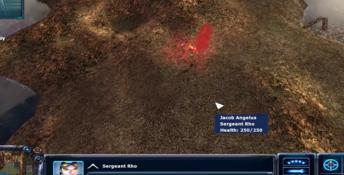

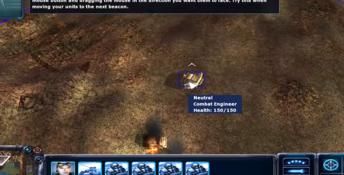

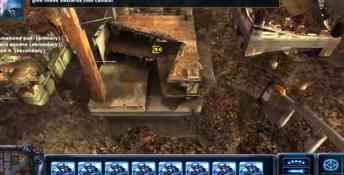
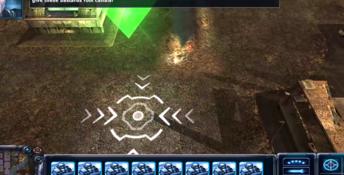
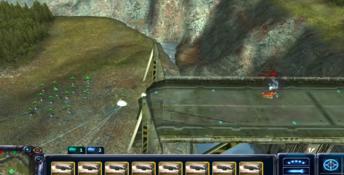
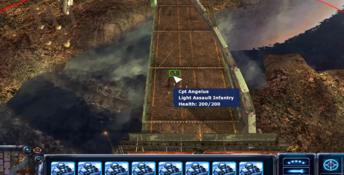
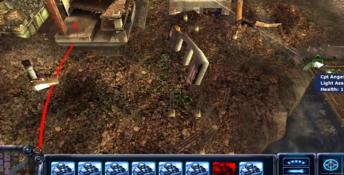
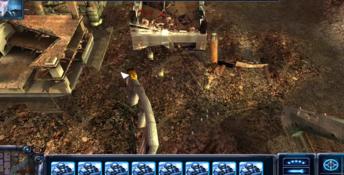
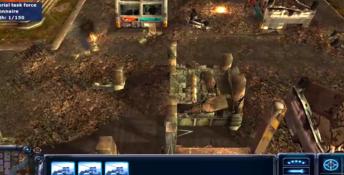

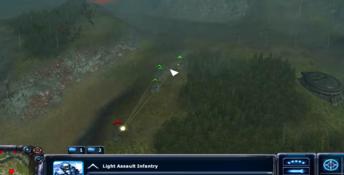
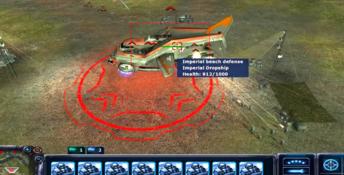
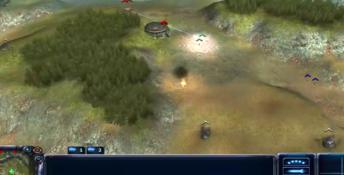
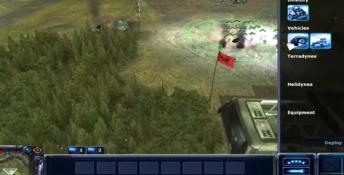
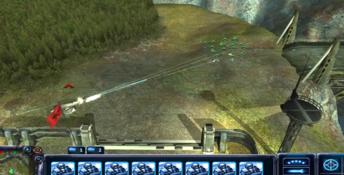
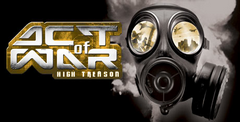 Act of War: High Treason
Act of War: High Treason
 Blood Bowl
Blood Bowl
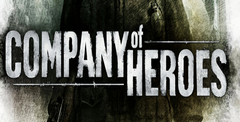 Company of Heroes
Company of Heroes
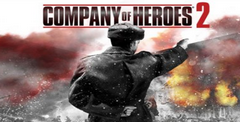 Company of Heroes 2
Company of Heroes 2
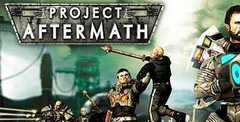 Project Aftermath
Project Aftermath
 Supreme Commander 2
Supreme Commander 2
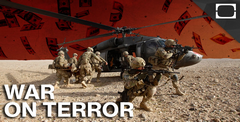 War On Terror
War On Terror